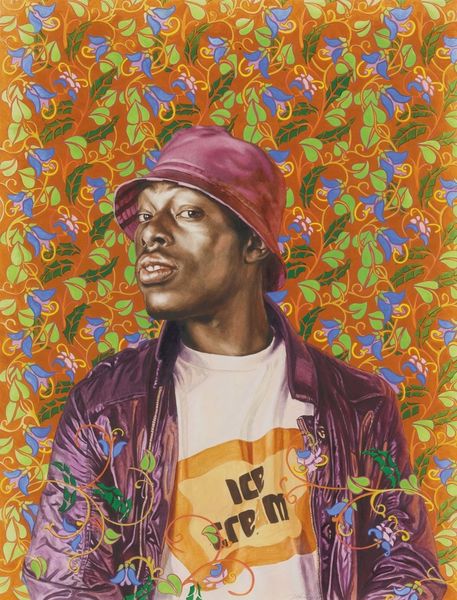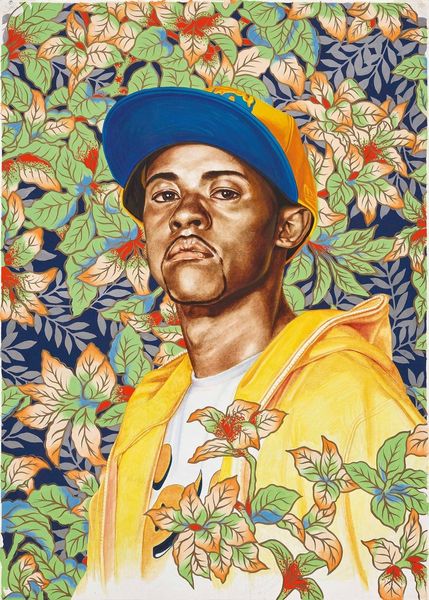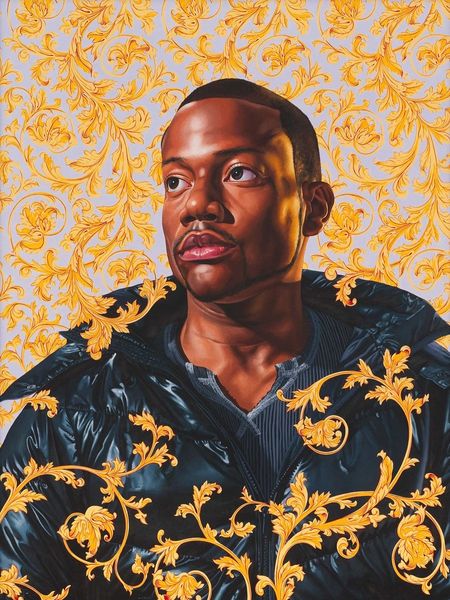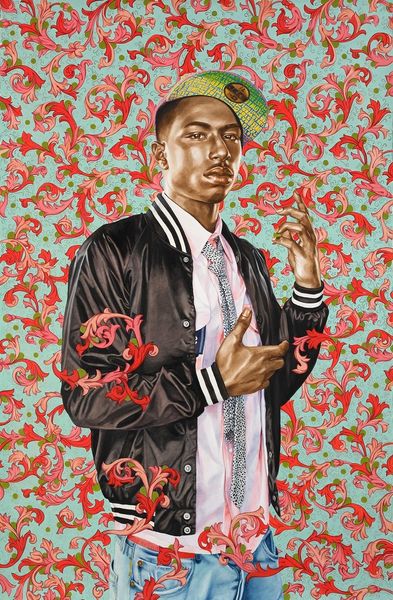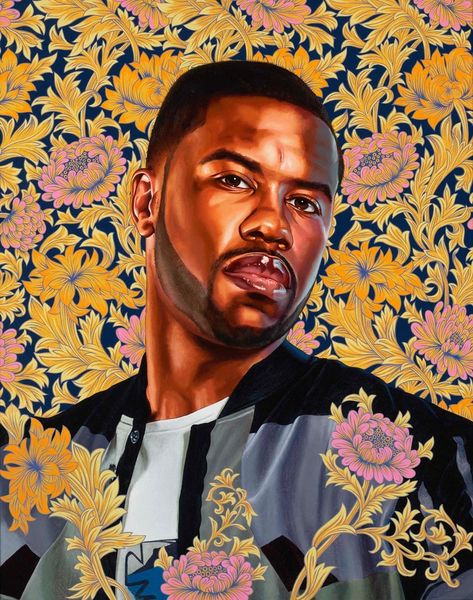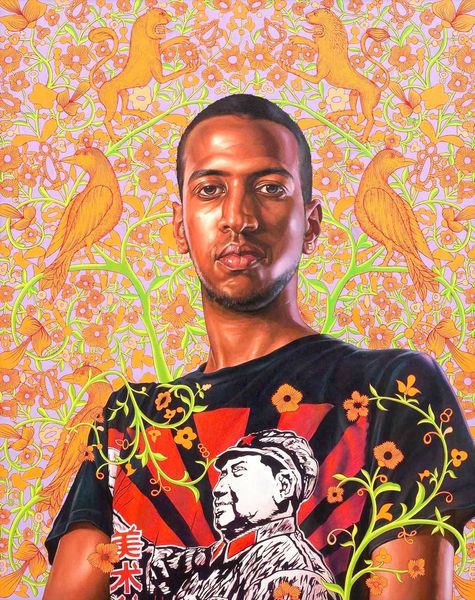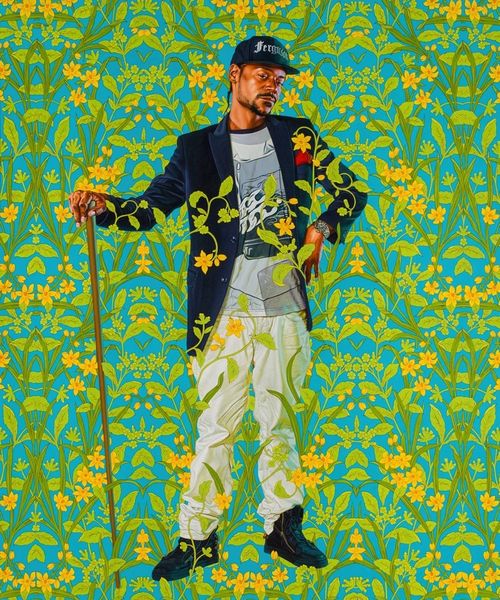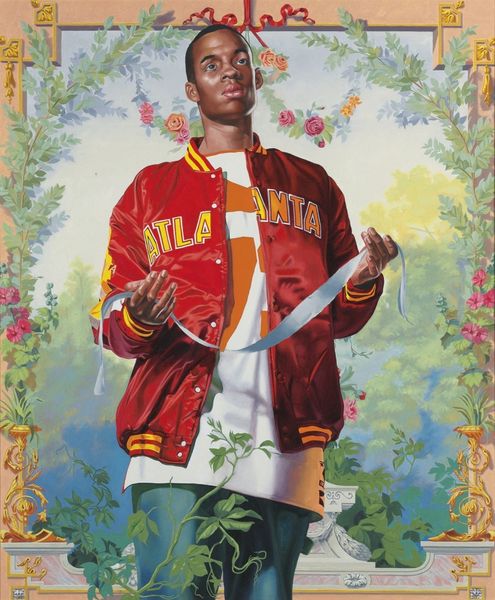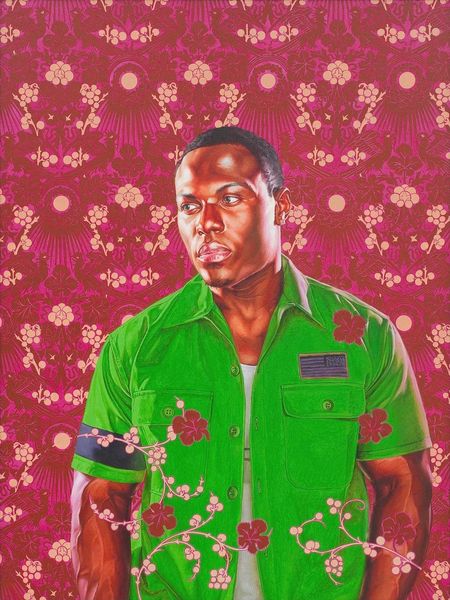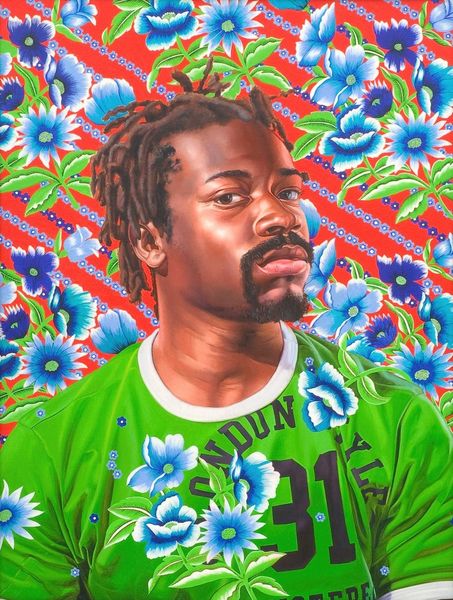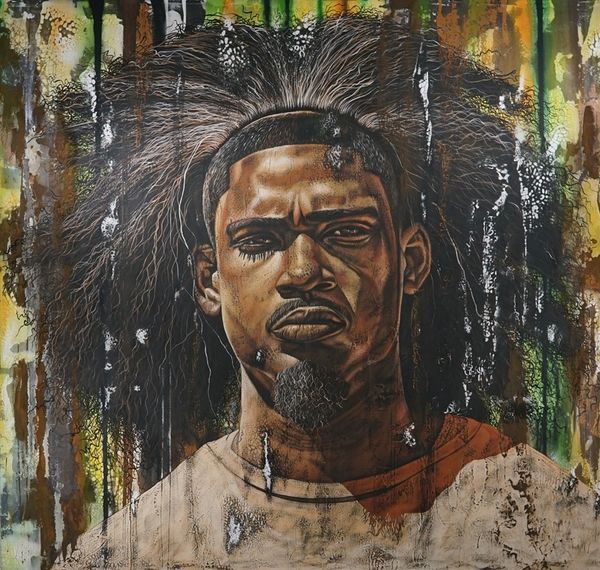
#
pattern-and-decoration
Copyright: Modern Artists: Artvee
Editor: Here we have Kehinde Wiley's "Algorna Study II" created in 2008, a vibrant acrylic painting. I'm immediately struck by the juxtaposition of the realistic figure with the ornate floral background. What is your interpretation of this painting’s visual structure? Curator: I see a sophisticated layering of visual codes. Observe how Wiley employs the portrait format, traditionally associated with European aristocracy, and subverts it by placing a contemporary Black man at the center. Notice the flattened plane of the floral wallpaper against the comparatively modeled figure. This deliberate disruption creates a tension between depth and surface. Editor: So, it's like he's using contrast as a primary technique? The realism of the figure versus the flatness of the background? Curator: Precisely. The highly patterned background not only flattens the image, but also functions as a field of semiotic meaning, evoking notions of power, status, and historical representation. The layering continues when we examine the sitter’s attire—the patterned shirt and baseball cap create a modern vernacular. Consider the artist’s use of visual disruption in relation to its philosophical implications. Editor: That’s fascinating. I never considered the wallpaper as part of the statement of the piece, instead of just, you know, pretty background. Curator: Wiley encourages us to reconsider the canon, to interrogate how representation operates and who gets to be represented in what manner. It uses techniques of disruption and superimposition in a critical engagement. This invites critical reflections on the construction of visual language and history itself. Editor: That makes me appreciate how all the individual parts combine into this overall idea and break boundaries by making the art itself a medium of philosophical analysis. Curator: Yes, and with the subject’s gaze directed to the side, Wiley also incorporates motion and space into the dynamic. There are several elements in tension throughout that keep viewers returning. Editor: Absolutely. It seems every component has a function beyond just simple ornamentation! Thanks, this has been really insightful.
Comments
No comments
Be the first to comment and join the conversation on the ultimate creative platform.
